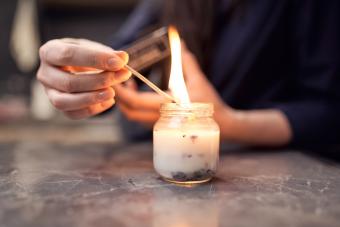
You probably already have one of the best household disinfectants in your laundry cabinet. Using bleach to disinfect, clean, and prevent illness is all about understanding how much to use and where and when to use it. When used properly, bleach can kill coronavirus, flu, cold, and even norovirus.
Disinfecting With a Bleach Cleaner
The World Health Organization (WHO) specifically recommends using bleach to disinfect in pandemic situations and during the outbreak of illnesses like influenza or coronavirus. Only use chlorine bleach for disinfecting; non-chlorine bleach is not effective. Additionally, the WHO notes that how you prepare the bleach solution is extremely important. Your bleach solution must have a proper concentration of bleach for it to kill germs. Too little bleach means it will be ineffective, while too much can harm people and damage surfaces.
Supplies for Bleach Disinfectant
Gather the following supplies to make a bleach disinfectant recommended by the WHO:
- Rubber gloves
- Apron
- Goggles
- Bucket or container that holds at least 12.5 cups
- Spoon or stirring rod
- Cold water
- Bleach (strength 5% sodium hypochlorite)
- Cup measure
- Tablespoon
How to Make a Bleach Solution
- Put on the apron, gloves, and safety goggle to protect your skin and clothing. Work in a well-ventilated place, such as a garage or near an open window.
- Measure out 12.25 cups of cold water and pour it into the container. Use only cold water because hot water decomposes the active ingredient in the bleach and makes it ineffective as a disinfectant.
- Carefully add two tablespoons of bleach to the cold water. Stir gently to mix.
Bleach Cleaners You Can Purchase
According to the WHO, any bleach cleaner needs to have at least 0.05% available chlorine to work as a disinfectant. Many products will include the amount of chlorine on the label. Clorox Clean Up Cleaner + Bleach and Lysol Power White & Shine Multipurpose Cleaner With Bleach.
How to Use Bleach to Disinfect
Bleach doesn't work immediately, and it's not ideal for all surfaces. Keep these guidelines in mind when you use a bleach cleaner.
Clean Before Disinfecting With Bleach
Always clean before disinfecting. The WHO reports that organic materials such as food, bodily fluids, and dirt can quickly deactivate bleach and render it totally ineffective as a disinfectant. Wipe down hard surfaces first. Rinse off organic material on fabrics or other items.
Keep Bleach on the Surface Long Enough
Many people assume bleach works instantly to disinfect against germs and kill mold, but this is not true. So how long does bleach take to disinfect? This depends on the type of surface:
- Smooth, non-porous surfaces - For smooth items like countertops, floors, bathtubs, and sinks, you need to leave the bleach solution on the surface for at least 10 minutes.
- Porous surfaces - Leave a bleach solution on porous surfaces like concrete or fabric for at least 30 minutes.
- Small objects - If you are soaking small objects like toys or eating utensils, leave them in the bleach solution for at least 30 minutes.
Keep Bleach Safety in Mind
Bleach is a highly corrosive material that can damage people and surfaces if not used properly. These tips can help:
- Never mix bleach with other cleaning products. This can weaken the disinfecting ability of bleach and create a toxic gas.
- Don't expose concentrated bleach to sunlight. It will react with the sunlight and create a toxic gas.
- Do not use bleach on skin or hair, since it can cause burns.
- Never get bleach in the eyes. Flush with water and call poison control if an accident occurs.
- Keep bleach cleaners out of the reach of children and pets.
- Bleach can weaken and discolor fabrics and corrode metals, so be aware of this when using it.
Storing Bleach and Bleach Solutions
The WHO stresses the importance of proper storage of bleach and bleach cleaners:
- Once you've mixed up a bleach cleaning solution, it is good for only 24 hours. After this time, discard it and make a new one.
- Never store concentrated bleach in direct sunlight. It reacts with the sun and loses potency, as well as creating a dangerous gas.
- Keep diluted bleach out of sunlight as well, since it can quickly lose effectiveness as a disinfectant when exposed to the sun.
- Do not store concentrated bleach for long periods of time, as it will lose effectiveness. Only buy what you need.
You Can Kill Germs
In outbreaks, pandemics, and other times of illness, it helps to know you can create a bleach solution to protect yourself and your family from germs. You can use bleach in the dirtiest places in your home, as well as in areas that just need to be disinfected. Knowing how and when to use bleach can mean a reduction in illness and infection in your home.







